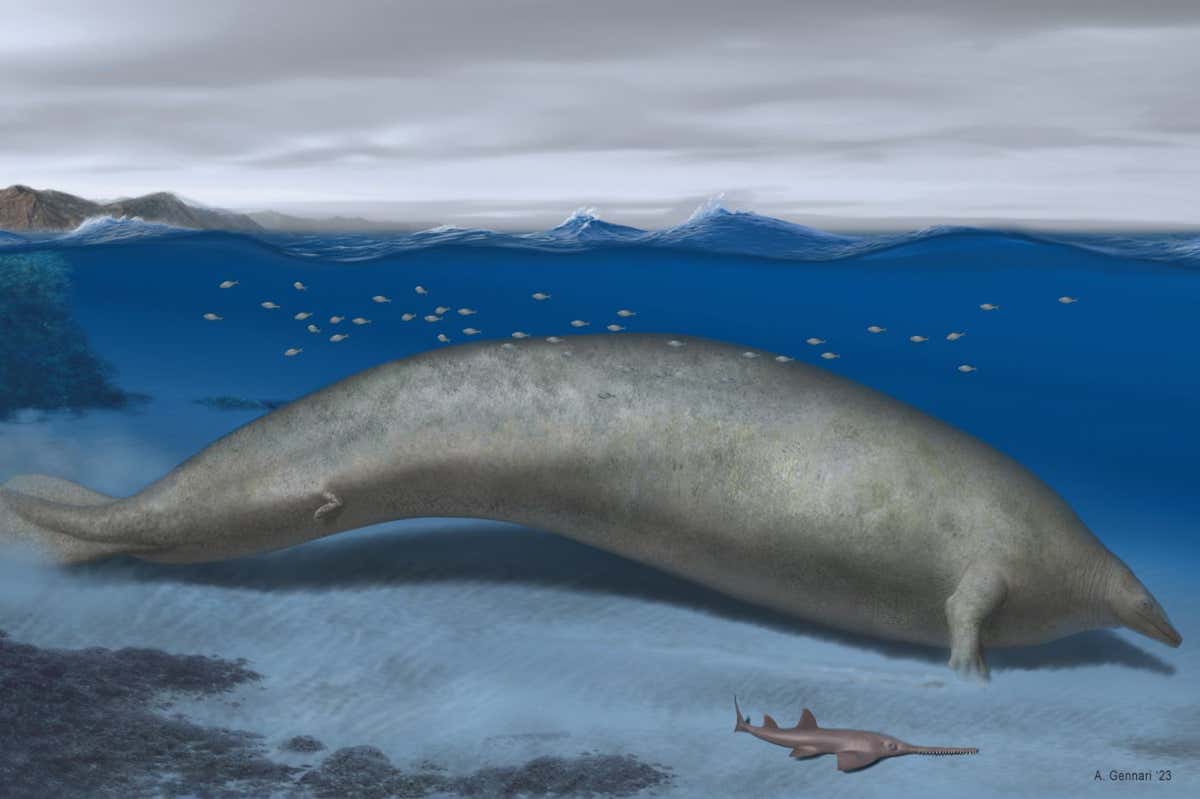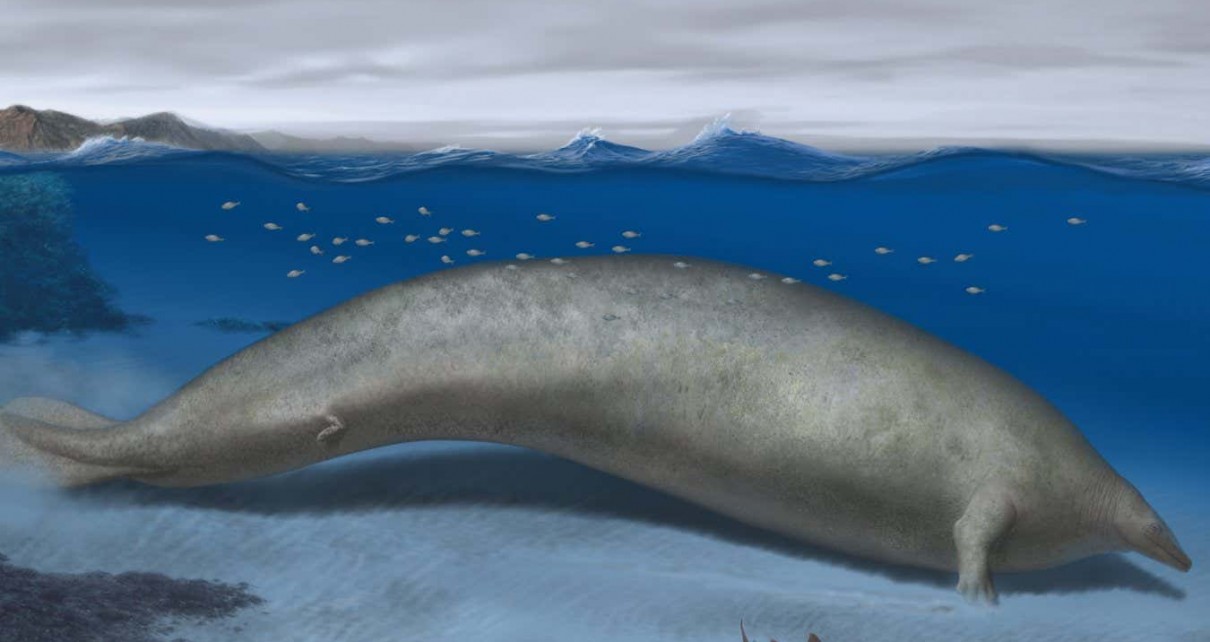[ad_1]

Reconstruction of Perucetus colossus, a whale that lived in coastal waters around 39 million years ago
Alberto Gennari
An enormous species of ancient whale, whose fossils have been discovered in Peru, was one of the heaviest animals that ever lived.
In 2010, palaeontologists conducting fieldwork in southern Peru stumbled across a strange object protruding out of the ground. “It was so weird that the scientists were not even sure it was actually bone,” says Eli Amson at the State Museum of Natural History Stuttgart in Germany.
It was only during its excavation that they realised the object must have been the bone of an enormous cetacean, a type of aquatic mammal that includes whales and dolphins.
Amson and his colleagues have since unearthed several more of the animal’s bones, piecing together a partial skeleton consisting of four ribs, 13 vertebrae and a small, broken pelvic bone. From carbon dating of the surrounding sediment, the team estimates that the specimen is around 39 million years old.
The team reconstructed a model of what the complete skeleton might have looked like by comparing the bones with those of similar species that lived at the time. The researchers then determined that the fossil belonged to a new species of whale, which they named Perucetus colossus. Based on the closely related ancient whale Cynthiacetus peruvianus, they suggest it had a small head relative to its massive body.
From the model, the team estimates that P. colossus probably measured around 20 metres in length and weighed between 85 and 340 tonnes. The largest blue whale on record weighed 190 tonnes, so P. colossus is a contender for one of the heaviest animals ever to exist.
The gigantic size of P. colossus suggests that whales may have undergone a burst in size 30 million years earlier in their evolution than previously thought, says Amson.
Massive cetaceans, such as the blue whale, have typically been associated with the deep ocean, but P. colossus, which is thought to have lived close to the coast, shows there is another path to gigantism, says Amson. “Our understanding of cetacean evolution, and more generally how extreme gigantism can be acquired, has been changed for the good,” he says.
“What a remarkable find!” says Lars Schmitz at Claremont McKenna College in California. “Estimating body mass in fossils is always super difficult, but I don’t think there is any doubt that this whale was very large.”
Unfortunately, without a skull, we can’t tell how or what this huge animal would have eaten, says Neil Kelley at Vanderbilt University in Tennessee. “Hopefully, new fossil discoveries will help answer these questions and give us a better picture of this strange extinct whale,” he says.
Topics:
[ad_2]
Source link




